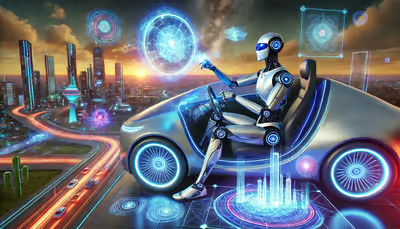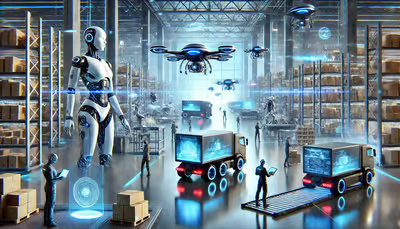NVIDIA has introduced Cosmos World, a platform that’s poised to give robotics and autonomous vehicles a big boost. By generating photorealistic training scenarios at lightning speed, Cosmos could reshape how these intelligent machines learn and operate.
When it comes to pushing technology forward, few things excite me more than breakthroughs in AI. The recent announcement of NVIDIA’s Cosmos World platform caught my attention because it aims to speed up the development of robotics and self-driving vehicles in a big way. Instead of spending endless hours gathering real-world data, developers can now generate massive amounts of realistic videos and images for training.
I’ve kept an eye on synthetic data tools in the past, but seeing them evolve to this extent is thrilling. Robots and autonomous cars need consistent, accurate information to navigate unexpected road conditions and unpredictable settings, and collecting that in real life can be costly. Cosmos World steps in by letting researchers produce photoreal, physics-based scenarios on demand. That means they can fine-tune models for everything from snowy streets to chaotic warehouse floors without logging the hours (and expenses) that would typically come from real-world testing.

One detail that stands out is how open the Cosmos platform is. Companies and individual developers can customize the models with their own data, which might range from self-driving trips around crowded cities to robots learning how to organize items in a storeroom. With Cosmos, they can generate more training material that stays close to real-world challenges. That flexibility helps teams jump ahead without waiting around for the next round of data collection.
NVIDIA’s focus on tokenizers, data curation, and advanced pipelines also looks promising. They’re aiming to take massive video files and convert them into more efficient data representations. The numbers are impressive, but what truly matters is how it could lower the barrier for smaller startups or research groups with limited resources. A simpler and faster process for building new AI models could mean more innovation in a shorter timeframe.
What really fires me up, though, is the broader impact on everyday life. We might be getting closer to a future where robots help with chores or deliveries. Self-driving cars have been a hot topic for years, but now it feels like general-purpose robotics might get an equal boost. This isn’t just about fancy research labs—it could shape the way we go about our daily routines.

There are still questions about how quickly these new models will translate into actual products or services. It seems inevitable that as the industry fine-tunes their AI with Cosmos World, we’ll see more capable robots and cars rolling out sooner than we expected. That momentum will likely spark fresh ideas on how to apply AI in other fields too, from healthcare to home assistants.

NVIDIA also stressed responsible AI principles, including watermarks on AI-generated videos. That’s reassuring, since trust is crucial when you’re dealing with technology that learns from synthetic data. Making sure developers follow solid guidelines helps keep misinformation at bay and fosters better practices across the industry.
I’m eager to see how this platform shapes the conversation around robotics and self-driving cars in the months ahead. Advances like these always bring up new possibilities and challenges. Yet it’s hard not to feel a sense of excitement at the thought of a more accessible AI ecosystem. If Cosmos World delivers on its promise, we may be on the cusp of a new era where smart machines become a bigger part of our daily routines—both on the road and in our homes. AGI/Singularity here we come!

